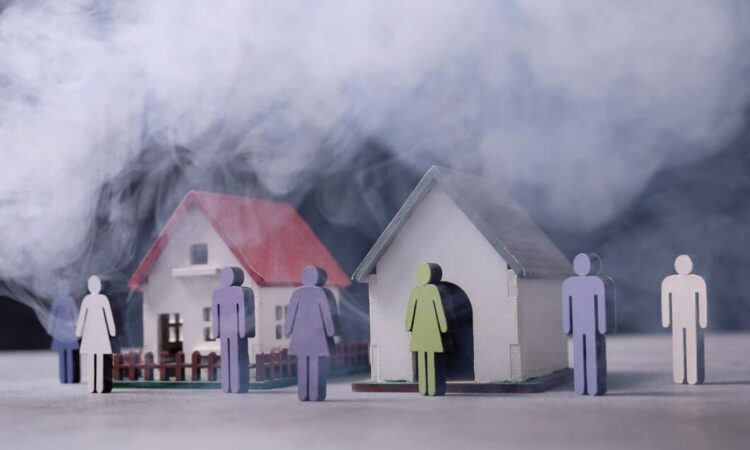Evictions are a life-altering event for many families, often leading to homelessness, financial instability, and a host of emotional and health challenges. In response, eviction prevention programs have emerged as a crucial resource for vulnerable households. By offering financial support, legal aid, and access to social services, these programs play a key role in keeping families housed and communities stable.
The Scope of the Eviction Crisis
Before understanding how eviction prevention programs work, it’s important to grasp the scale of the problem. Millions of families across the United States face the risk of eviction each year. Vulnerable populations, including low-income families, single-parent households, and individuals with disabilities, are particularly at risk. The COVID-19 pandemic only amplified this crisis, highlighting the urgent need for proactive solutions.
The Consequences of Eviction
Evictions disrupt nearly every aspect of a family’s life. From losing access to stable housing and schools to experiencing mental health challenges, the ripple effects are profound:
- Homelessness: Many evicted families end up in shelters or on the streets, creating cycles of poverty and instability.
- Economic Strain: Eviction often leads to mounting debt as families struggle to find new housing, pay moving expenses, and address legal fees.
- Social Disruption: Losing a home frequently disconnects families from their communities, schools, and support networks.
How Eviction Prevention Programs Work
Eviction prevention programs address these challenges by providing targeted support to families in crisis. Here’s how they operate:
Financial Assistance
One of the most effective ways to prevent eviction is by offering direct financial aid. Programs often cover overdue rent, utility bills, and other essential expenses to help families stay current on payments. This immediate intervention can stop an eviction process in its tracks, giving families the breathing room they need to regain financial stability.
Legal Aid and Advocacy
Navigating the legal system can be daunting for families facing eviction. Many prevention programs offer free or low-cost legal assistance to ensure tenants understand their rights and obligations. Attorneys can negotiate with landlords, contest unfair evictions, and advocate for clients in court. This legal support often makes the difference between losing and retaining housing.
Mediation Services
Mediation provides a platform for tenants and landlords to resolve disputes without going to court. By fostering open communication and finding mutually agreeable solutions, mediation can prevent evictions while maintaining positive tenant-landlord relationships.
Access to Social Services
Beyond financial and legal assistance, many programs connect families with additional resources such as:
- Employment services to help tenants find stable income.
- Mental health counseling to address stress and anxiety caused by housing instability.
- Housing relocation assistance for families who need to move to more affordable accommodations.
Success Stories: How Prevention Programs Make a Difference

Eviction prevention programs have already demonstrated their ability to transform lives and communities:
- Reduced Homelessness: Cities implementing robust prevention programs have seen significant declines in homelessness rates. For example, programs offering rental assistance during the COVID-19 pandemic helped millions of families avoid eviction.
- Improved Stability: Families who receive timely support are more likely to remain in stable housing, enabling children to stay in school and parents to maintain employment.
- Cost Savings: Preventing an eviction is far less expensive than addressing homelessness. It’s more cost-effective to keep families in their homes than to provide emergency shelter and related services.
Challenges and Opportunities
While eviction prevention programs are highly effective, they face several challenges:
- Limited Funding: Many programs rely on government grants and donations, which can be inconsistent.
- Awareness Gaps: Some families are unaware of available resources or face barriers to accessing them, such as language or transportation issues.
- Landlord Cooperation: Success often depends on landlords’ willingness to participate in mediation or accept payment plans.
Expanding the Reach of Eviction Prevention
To address these challenges, communities can:
- Increase funding for programs through public and private partnerships.
- Raise awareness with targeted outreach campaigns.
- Implement policies that encourage landlord participation and accountability.
Why These Programs Matter
Eviction prevention programs are more than a safety net; they are an investment in stronger, healthier communities. By stabilising families, these initiatives reduce the social and economic costs of homelessness while promoting equity and opportunity.
A Broader Impact
When families remain housed, entire communities benefit. Stable housing contributes to better educational outcomes, improved public health, and reduced strain on social services. These programs also help maintain neighbourhood stability by preventing the disruptions caused by widespread evictions.
Conclusion
Eviction prevention programs provide a lifeline for vulnerable families, addressing immediate crises while laying the foundation for long-term stability. By offering financial assistance, legal advocacy, and access to essential resources, these programs not only prevent homelessness but also strengthen communities. As awareness and support for these initiatives grow, their potential to create meaningful change becomes increasingly evident. Together, we can ensure that every family has the security and dignity of a place to call home.
